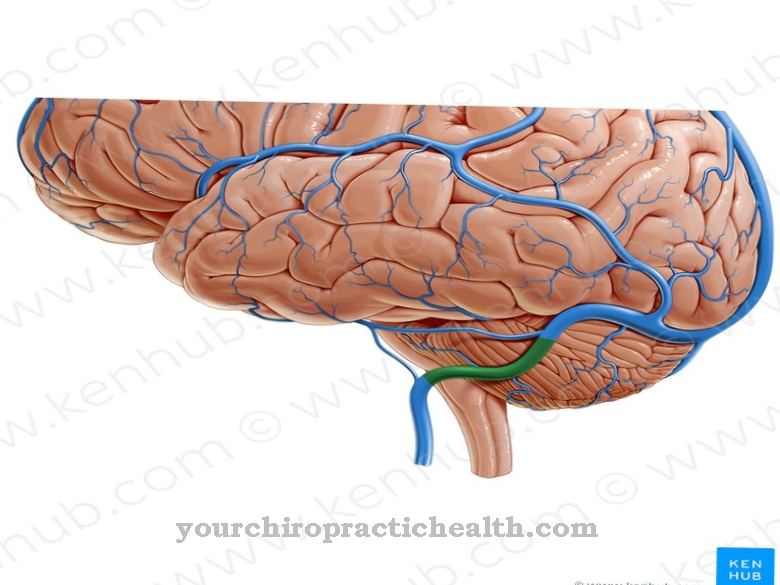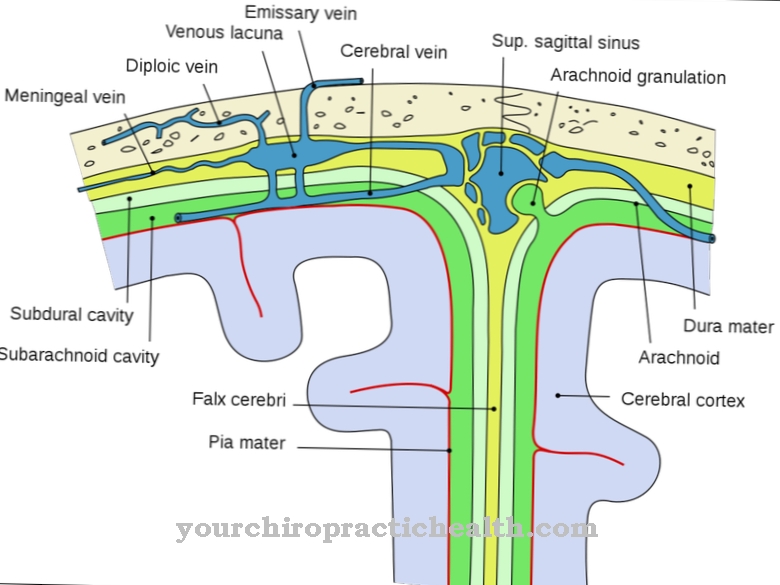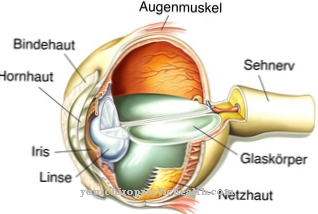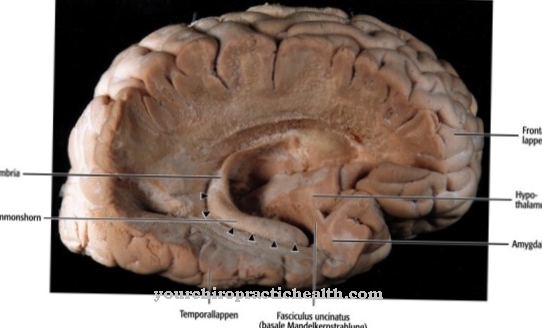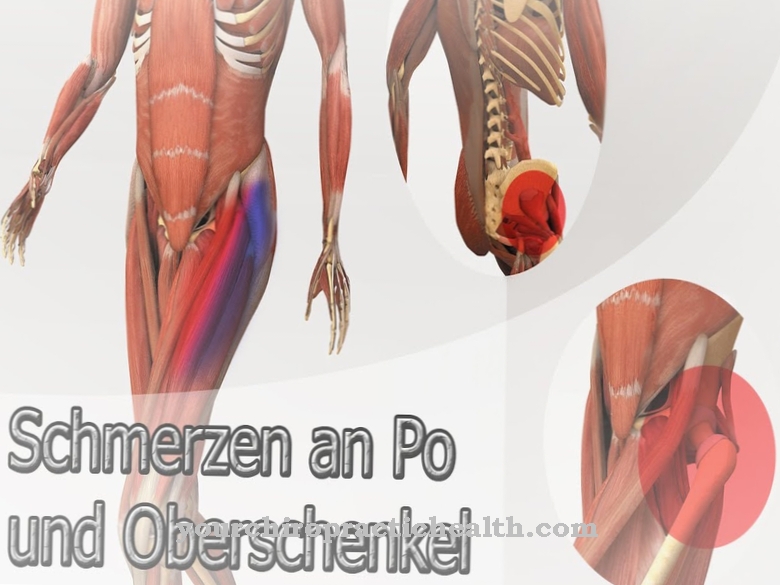Of the Cremaster muscle is also known as Kremaster muscle or Testicle lifter denotes and surrounds the spermatic cord and testicles. It reflexively contracts to external stimuli such as cold and pulls the testicles towards the trunk. If the testicle is defective, such as the pendulum testicle, an exaggerated reflex movement causes abnormal testicular positions.
What is the cremaster muscle?
The cremaster muscle or muscle cremaster is a loop-shaped muscle made of muscle fibers of the abdominal muscles. The fibers of the musculus obliquus internus abdominis and the musculus transversus abdominis are involved in the cremaster muscle. These are muscle strands of the lower abdomen that meet in a loop in the kremaster muscle.
The cremaster muscle is one of the striated muscles and therefore belongs to the skeletal muscles. Like any other skeletal muscle, the cremater muscle can contract, moving the testicles towards the head. Because of this function, the muscle is popularly used as well Testicular lifter muscle called. Unlike most skeletal muscles, the contraction of the kremaster muscle is relatively involuntary and tied to certain environmental stimuli. The cranial movement of the testicles is intended to ensure the production of semen in the event of counterproductive stimuli such as cold.
Anatomy & structure
The muscle fibers of the two lower abdominal muscles form fiber bundles in the cremaster muscle. These bundles follow the spermatic cord in their course. They run in loops of increasing length that accompany the fascia of the testicles and the spermatic cord. They insert the tunica vaginalis and are innervated via the genital branch.
This nerve is a section of the genitofemoral nerve that connects the anatomical structure of the Kermaster muscle with the nervous system and enables it to respond to stimuli. Unlike the testicles, the spermatic cord is completely covered by the muscle fibers. The striated muscles of the body are made up of sarcomeres. The myofilaments myosin and actin make up these sarcomeres and partially overlap each other. Light I bands from actin alternate in the muscles with dark A bands from myosin bundles.
Function & tasks
The task of the kremaster muscle is to raise the testicle towards the abdominal wall. If the skin on the inner side of the thigh is exposed to temperature stimuli, for example, the testicles are pulled upwards by the contraction of the muscle and they are in a more protected environment. This process corresponds to a reflex and is also called the cremaster reflex. This is an innate, foreign reflex that, like all other motor reflexes of the skeletal muscles, is connected via the spinal cord.
Thanks to this interconnection, the muscle is able to respond particularly rapidly to certain stimuli. The states of the spinal cord segments for the external reflex are the segments L1 and L2. The reflex of the kremaster muscle can also be observed in animals. Some animals even pull the testicles completely into the abdominal cavity in response to certain stimuli. Since the cremaster reflex is mainly triggered by cold stimuli, there has long been talk of the testes' own thermoregulation in this context. The general assumption at that time was that the reflex movement wanted to create an ideal temperature for the production of sperm by regulating the heat supply in the testicle environment.
Thus the function of the kremaster muscle was not insignificantly associated with reproduction. Since the testicles are drawn closer to the body due to the cremaster reflex, but also with strong excitement, the connection with thermoregulation is now considered controversial. When aroused, the reflex probably only indicates an imminent orgasm. However, even after this observation, the original temperature control thesis is not completely excluded.
Diseases
The kremaster reflex of the kremaster muscle can behave abnormally and be too strong or too light, for example.Under certain circumstances the reflex movement can also come to a complete standstill.
Abnormal reflex behavior of this kind can indicate both peripheral and central nerve damage. The spinal cord segments L2 and L3 can be affected by lesions, for example, which are usually due to either a spinal infarction or degenerative and inflammatory diseases of the central nervous system. In this context, in addition to the autoimmune disease multiple sclerosis, the degenerative nervous system disease ALS should be mentioned. However, excessive reflex responses of the kremaster muscle can also occur in the context of testicular dystopias such as the pendulum testicle.
Testicular dystopias are unilateral or bilateral defects in the testicles, as they can be present in the context of mutations and various hereditary diseases. In this context, pendulum testicles are testicles that are normally located in the scrotum, but react to external stimuli with an extremely lively cremaster reflex. This lively reaction causes them to change into an absurd localization at the moment, for example in a highly crotal or inguinal position. This testicular dystopia is one of the retractile malpositions and does not necessarily have to be treated as long as the person concerned does not suffer from it. However, if a pendulum testicle is not in the scrotal position most of the time, corrective surgery may make sense.
The cremaster muscle itself can also be affected by diseases. Typical muscle diseases such as torn muscle fibers or muscle inflammation are rare in this region. Peripheral nerve damage is more common. For example, neuropathy can affect this muscle, such as is triggered by malnutrition, various infectious diseases or poisoning.

